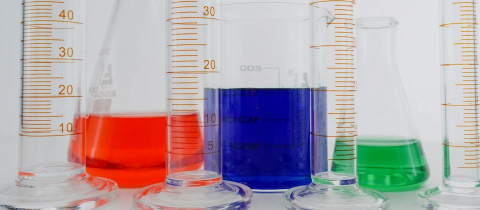What makes something “pseudoscientific”? The answer to this question—of how to discriminate between genuine science and a wolf in science’s clothing—can be very complex, as it actually falls under the jurisdiction of philosophy. But even without wading into the waters of the philosophy of science, we can identify warning signs that one’s credulity might be taken for a ride.
Let’s focus on an interesting example.
There are, spread over Ontario, a dozen Correactology® Health Care Centres. If I suffered from a debilitating and degenerative disease and weren’t a scientist, I could conceivably be tempted by their offer of “a method of treating people who are sick or in pain by changing the density of the body’s cellular network.” It sounds scientific, and the website’s design is both soothing and academic looking.
But is Correactology® a genuine science? It is, after all, referred to as such on their patient intake form: “It is a natural science, unique and distinct because it is focused on the understanding of the correlation between physical pain and malfunction.”
Here are some of the hallmarks of pseudosciences. Let’s see if they apply to Correactology®.
1. Every disease has a single cause and they’ve got the cure-all
In the real world, diseases often have distinct causes. What gives you skin cancer is not the same thing that gives you diabetes. It then follows that medical treatments must be tailored to the disease, which is why doctors don’t have a panacea and must resort to an assortment of drugs, surgery, radiation therapy, and lifestyle modifications to treat conditions.
In the world of pseudosciences, however, gurus believe that every disease is due to one thing. They have also, quite luckily for their bank account, discovered the one treatment to cure everything.
Correactology®’s boogeyman is density. Density is how much matter there is in a particular space. Practitioners of Correactology® are concerned with the density of the body’s network of cells and how it changes.
Disease happens when there’s a specific shift in density, we are told. Practitioners intervene to restore proper density, so that health can return.
Sounds simple, right? That’s because it’s wrong. In trying to find the one cause of all diseases, pseudoscientists end up overly simplifying anatomy, physiology and molecular biology. One of the founders of Correactology®, Allan Lapointe, came up with the hypothesis that the body was divided into eight segments. A video on YouTube from a patient explains that each of these segments is “a distinct family of cells”. Based on their graphic representation, every cell found in the left side of the head, neck, shoulder, chest, abdomen, and arm is the same type, and is different from the cell type found in the corresponding right side. Any sane pathologist would laugh at that statement. This is simply not how our bodies are built at the cellular level.
And the treatment for these alleged disturbances in cellular density lacks scientific plausibility. To permanently alter how many cells are present in a section of your body, a Correactology® practitioner will use rapid hand movements. If it were this easy to get rid of diseases, hugs would carry medical potency and Care Bears would run hospitals.
So how exactly do these practitioners explain that their hand movements work?
2. Mechanisms of action are often drawn from new, evolving sciences
New scientific advances are fertile ground for catch-all explanations of unexplained phenomena. Just like they end up giving Peter Parker his Spider-Man abilities, whatever is new, exciting and slightly terrifying can be used to make questions quickly disappear.
Quantum mechanics is a popular go-to for the quacks. The fact that light is both a particle and a wave is freaky: might it not be, then, that such confusing physics explain away consciousness? strength-boosting pins? a tick-repelling barrier that harnesses your dog’s bio-energetic field to create a frequency barrier against insects?
The nascent field of epigenetics—which studies how the expression of genes can be changed without altering the genetic sequence itself—is a newer example of the abracadabra power of shiny science. If you don’t know how something affects your health, say it’s epigenetic! It sounds cool and it’s all the rage these days!
Sure enough, Correactology® wraps itself in the comfort of both of these blankets. To become a practitioner, you must follow a course in Quantum Biology, “allowing a greater scientific understanding of how a momentum correction can physically alter the body and facilitate healing.” Of course, the kind of hand movements used by Correactology® practitioners (or their close cousins, the chiropractors, for that matter) has nothing to do with the weirdness of subatomic particle physics. But if you don’t buy into “quantum healing”, maybe you’ll be interested in epigenetics? Their student handbook explains that these hand movements can also “influence genetic expression” in order to restore health! Indeed, when Jay Novella, of the skeptical podcast The Skeptics’ Guide to the Universe, spoke to a Correactology® practitioner, he was told that “it’s based on epigenetics. You gotta come in and we’ll see if it works for you.”
And some people, of course, say that it “worked” for them.
3. Their best argument is testimonials
We are storytelling machines, which is why we respond much more deeply to testimonials than to scientific data.
Pseudoscientists bank on the appeal to personal experience to convince you that the magic dust they are selling actually works. Sure enough, the Canadian Institute of Correactology®’s website has a whole section dedicated to testimonials. We hear from people with low back pain, headaches and scoliosis, but also from others with allergies, autoimmune diseases affecting children, and even diabetes. Of course, the Institute isn’t claiming it can cure these diseases. They are merely providing a platform for other people to make these claims on their behalf.
So how are simplistic explanations, pseudoscientific hand-waving, and personal anecdotes allowed to resist scientific inquiry?
4. A closed system prevents outside criticism and academic growth
A defining feature of science is that criticism is encouraged. Anyone who’s submitted a paper to a scientific journal is intimately familiar with this core value: scientists love criticizing each other’s work. It’s what improves the state of our knowledge. Since pseudoscience can’t stand up to scrutiny, its adherents tend to work in closed systems, away from peer review, to shield themselves from critical inquiry.
Correactology® has its own institute (incorporated as a federal not-for-profit teaching facility in 2008). It has its own association (similarly incorporated). Its practitioners are part of a Health Care Group (Inc.!). PubMed and MEDLINE, searchable databases of biomedical scientific papers, show a grand total of 0 publications related to the term “correactology”.
And something slightly more insidious can be seen when one takes the time to read their Student Handbook. The prospective student is told that they may “conceive, develop or contribute” Correactology®-related material during their studies. Certainly, when I was a graduate student, I did generate knowledge. That was the whole point. The student is warned, however, that any of this will be the proprietary property of the Canadian Institute of Correactology®. This is not the hallmark of a scientific enterprise; rather, it has all the trappings of a business.
A classic pseudoscience
There are other boxes Correactology® checks on the list of pseudoscience hallmarks, as if it were eagerly collecting them:
* Disingenuous appeal to patient empowerment: “We encourage our patients to be empowered – to take charge of their health and to consequently regain the quality of life they deserve.” (From their Correactology® Practitioners’ Message page)
* Demonization of the medical profession: “These lectures, if applied will ultimately empower you with the knowledge to navigate your way through, and survive the collapse of the national disaster we call our health care system.” (From their Student Handbook)
* Rebranding of debunked practices: “A dichotomous muscle reflex test that yields information to the location of the cellular segments that are not in their proper tension environment,” which is no different from applied kinesiology, a pseudoscience most recently used on Dragons’ Den to sell quantum clips. (From their “About Correactology®” page)
* Focus on the body healing itself: “[…] the human body has an innate capacity to recover as long as its cellular segments are at their Optimum Operating Density (OOD).” (From their “About Correactology®” page)
In short, Correactology® has all the hallmarks of a pseudoscience. Its inventors claim to have discovered a universal boogeyman and its accompanying panacea; it drops in words from newer, shiny sciences poorly understood by the public in an attempt to explain away its magical claims; it relies heavily on anecdotes to attract customers; and it is a closed system whose ideas have not been peer reviewed by scientists and medical doctors.
Buyer beware.
Want to engage with this content? Comment on this on our Facebook page!







